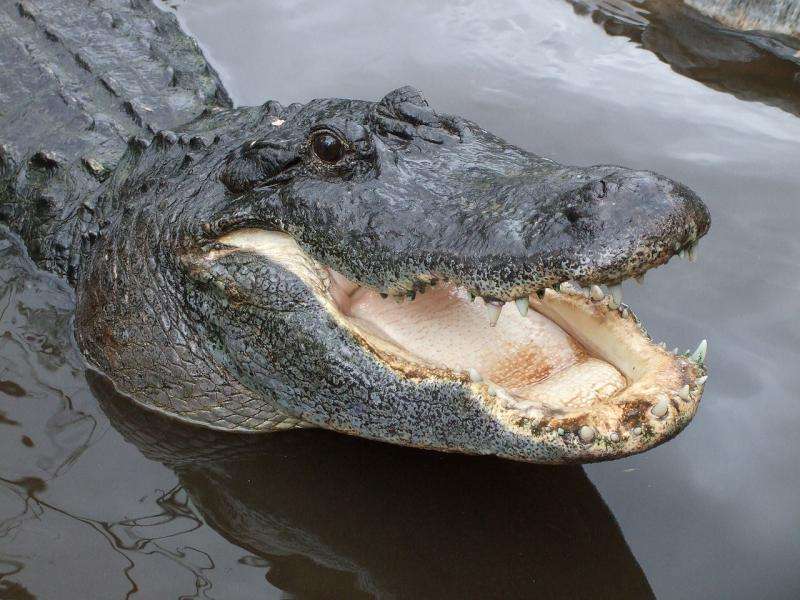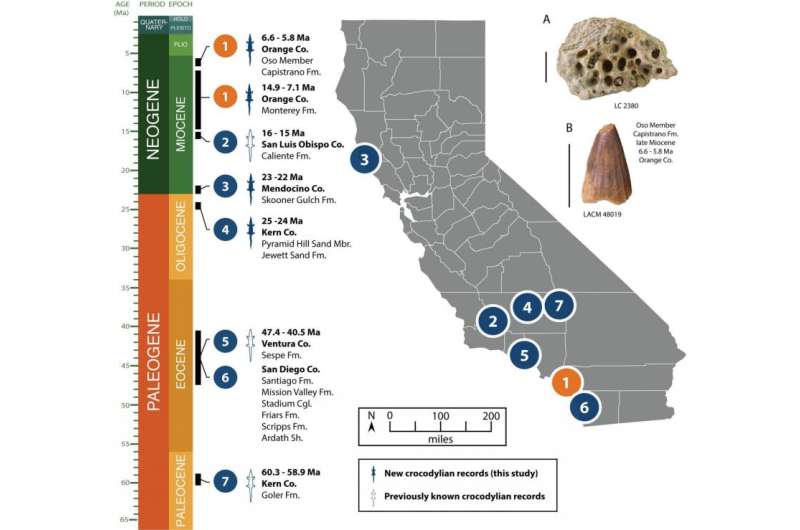Extending the history of crocs in California

If you think of crocodylians in the United States (you do think about them, don't you?), your mind probably settles on the alligators of the southeast. The extra-enthusiastic croc buff might even remember the American crocodile native to southern Florida (and a good chunk of Central and South America). The extra-extra-extra-enthusiastic croc buff (I am purposefully not using the word "nerd" here), though, knows that if you go back far enough in time, you can find a crocodylian just about anywhere and everywhere. The changing geographical distribution of gators, crocs, and their kin ties directly to changing environments.
A new paper
by Michelle Barboza and colleagues, published in PaleoBios, highlights the fossil croc record for California, particularly focused on the last 66 million years after the big dinosaur extinction. Scientists have known about California
Barboza and co-authors scoured a number of museum collections, assembling a "who's who" of fossil crocs from California. Many of the specimens were collected as "by-catch" from projects focused on fossil mammals; other specimens (including some of the most scientifically significant) popped up in construction sites. The Oso Member of the Capistrano Formation, exposed in a narrow band of rock around 20 miles (~32 km) from Disneyland, provides a particularly rich record. Commercial development in the 1980s, 1990s, and 2010s unearthed numerous fossils not just of crocodylians, but also sharks, other fish, turtles, horses, and even bunnies. Mitigation paleontologists, sometimes literally working in the trenches of these construction zones, ensured that the bones ended up in permanent museum homes.

One big question about the Oso Member was its age. Unfortunately, incomplete crocodile bones aren't terribly useful for answering this–many croc teeth, for instance, are pretty similar whether they are 10 million years old or 10 days old. Horse teeth are data-packed, though. Horses evolved rapidly, and each species existed for only a narrow window of time. Their cheek teeth can be especially distinct, and also happen to be especially common. If you have horse teeth of Species A in rocks of a known age (perhaps measured using radiometric dating), you can safely infer that any rocks containing Species A are from approximately that same age. Barboza and her colleagues identified a number of teeth from Dinohippus interpolatus in the Oso Member–that species is only found in rocks between 6.6 and 5.8 million years old.
The Oso Member crocs, which hadn't been reported in the scientific literature before, aren't much to look at—just one tooth and a fragment of a bony skin plate (osteoderm). They can't be confused with anything else, though. The horse teeth provide important context—if the crocs are only around 6 million years old, that means they are 10 million years younger than the previously known "youngest" crocs in California, which were around 16 million years old.
Crocodylians, then, had a much longer history in California than realized. There are lots of unanswered questions—how common or ecologically important were these last hold-outs? When did the group totally die out in California? And, why? The answers may well be waiting in some future housing development.
More information: Barboza, M.M., J.F. Parham, G-P. Santos, B.N. Kussman, J. Velez-Juarbe. 2017. The age of the Oso Member, Capistrano Formation, and a review of fossil crocodylians from California. PaleoBios, 34. ucmp_paleobios_ 33797, escholarship.org/uc/item/6sg3v4gs
Provided by Public Library of Science
This story is republished courtesy of PLOS Blogs: blogs.plos.org.



















